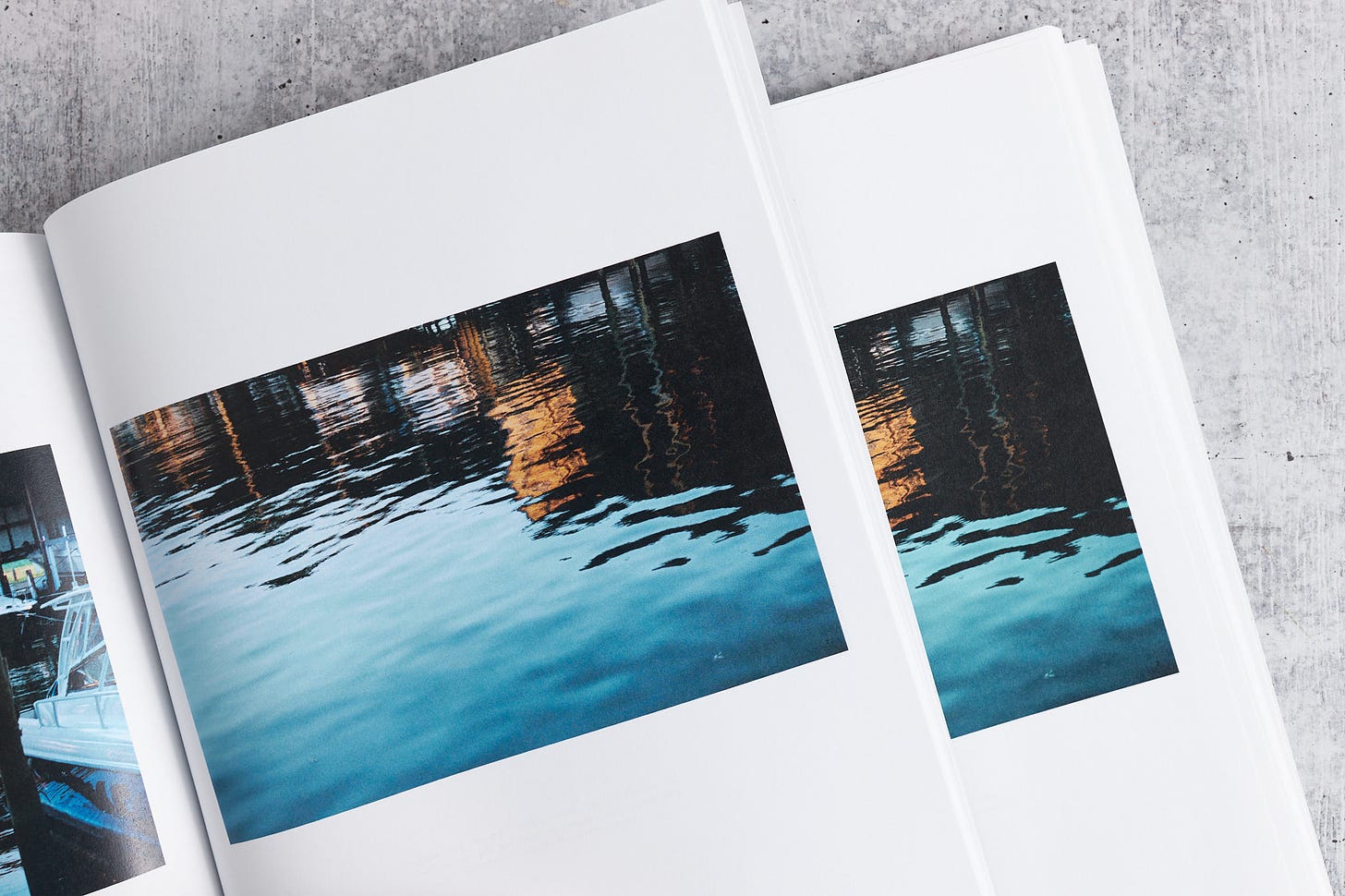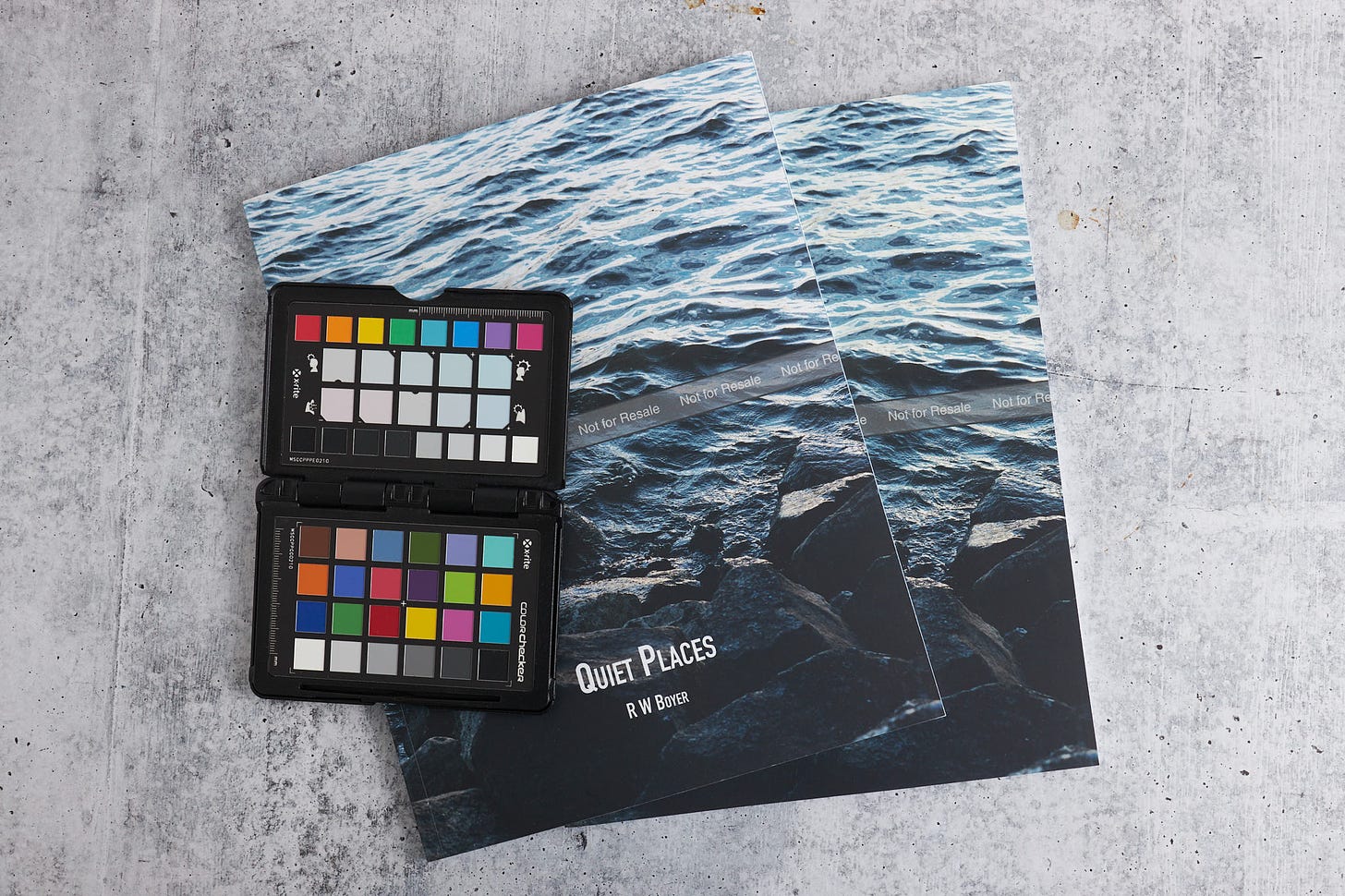By R. W. Boyer
Did you know Amazon has on-demand print services? Who else would be referred to as ”the 800LB gorilla”? The elephant in the room? Now that we’ve dispensed with the large animal clichés, down to business.
Did you know that those services provide full color? Maybe you thought Amazon self-publishing is all about Kindle eBooks. That would be easy to assume. Amazon will gladly print a paper version of all self-published books for anyone that wants one.
It would be easy to assume that Amazon self-publishing is all about Kindle eBooks, but Amazon will gladly print a paper version of all self-published books for anyone that wants one.
You may not know that the whole Kindle part can be bypassed. You can upload a full-color PDF then sell paper-only versions of publications. For photo-intensive layout-focused publications, this works out better than the typical Kindle text-centric layouts.
Magazine and soft-cover books via PDF are all part of the Kindle Direct Publishing (aka. Createspace) services. You'll have to sign-up for KDP. Once signed up it's a straightforward process to publish a paper-based book or magazine.
I've given an overview of the book printing industry in part one of this series. KDP uses digital press technology to deliver on-demand printing. A large portion of any hardcopy publication orders from Amazon is printed and shipped from the nearest warehouse. The technology is similar to other digital press services offered. The best way to utilize the service for image-intensive books is a CMYK PDF.
I photographed a mini-project for the sole purpose of testing Amazon KDP's suitability, cost, and value. I ran three distinct tests across three separate orders to evaluate the service. I'll go into details about why I ran three different tests but first here are the take-aways when considering KDP to publish photography books.
The Upside Of Kindle Direct Publishing
Ubiquitous access and fast turn-around
Simple and limited options
Inexpensive for small quantities, even one copy.
Before going live selling copies on Amazon you can order a proof, dirt cheap (up to ten copies at a time)
Ability to sell and fulfill orders directly through Amazon
Reasonable quality using the "premium paper" option
The Downsides
No specific color profiles or specifications to follow beyond CMYK. Worse is that Amazon allows you to send a multitude of file types that have many unmanaged or multiple color profile images embedded in them. No errors, no warnings; they will print but... poorly and unpredictably
Order to order color and paper variations
The color accuracy might be acceptable but not may not be critically accurate to what you saw when soft-proofed.
Commission fees when sold through Amazon
Limited page sizes and orientation options, e.g. No large landscape books (I think the only way to get a landscape book is through custom sizing with a 8.5in width limit)

Notes And Advice
The lack of specific CMYK color profiles or any specific color specifications is a significant downside. What do you proof to? What do you send? KDP’s guidelines are difficult to decipher. If you have printing experience you'll be searching for answers that don't exist. The guidelines imply that it doesn't matter much if it's CMYK or RGB or a mixed bag. They spend a lot of time and space enumerating all sorts of applications and how to export from those. The color management details are skipped.
The guidelines imply they'll handle the conversions but then say any profiles you attach are ignored. Depending on your point of view the guidelines could be read as...
Don't worry about it, we'll make it all work out
Or...
Don't worry about it, we don't do color management, it will never work out but something will print and we'll ship it out, color be damned
I ran three tests to evaluate exactly what happens with document color spaces and profiles. Those three tests allowed me to evaluate how much order to order variations. I was surprised when I saw color variation from item to item within a single order.
My best advice based on limited testing is:
Convert everything to CMYK and US SWOP coated as a profile.
Do not allow them to convert RGB images to CMYK for you.
Never ever send anything but sRGB if you decide to use KDP but cannot convert and proof to CMYK.
Sending embedded Adobe RGB images made it clear they ignore the color profiles attached to images.
Sending sRGB images worked but it's better to send them converted and proofed in CMYK on your end.

Let's discuss the variations I noted above. The color accuracy versus proofing to US SWOP CMYK can be acceptable but not at all accurate from a critical perspective. All projects do not need critical accuracy. I imagine the lack of clear color management guidelines is meant to eliminate any expectation of critical color accuracy or consistency. The variations I observed are not wildly different. Most people wouldn't notice unless prompted to evaluate one copy against another side by side.
The larger concern might be the paper quality variations I experienced order to order. I selected "premium paper" for each test order. On two of the orders, I would consider the paper acceptable, premium for a magazine-type publication. I found the paper to be borderline with the third order. Premium was not the correct term compared to other services similarly labeled paper options.
For lower-cost magazines marketed as a magazine rather than a book the paper quality is acceptable. The paper would be unacceptable if that same publication was marketed with a retail price on the high-end implying a fine art book. I saw considerable bleed through that distorted areas of color on some of the images. The paper felt thin and inconsistent throughout. Don't misinterpret what I am saying, the "premium paper" option in the order I am discussing was on par or better than most newsstand magazines.
KDP has hundreds of locations and probably sources paper from many providers within a broad range of acceptable parameters for their purposes. I doubt Amazon has the ability or inclination to carefully and frequently calibrate to a precise color output spec across the globe. That’s not Amazon’s target audience... Yet.
Take Amazon KDP for what it is, an inexpensive provider that can produce acceptable results for some projects. They may be just the ticket where page count is high and content is not color-critical. Think of KDP the way you would a mass-market magazine. If your project is suitable for that type of physical delivery vehicle and you'd like hands-off sales and fulfillment KDP is perfect. Try it yourself. A seventy-ish page 8.5" x 11" proof copy will set you back about $10.




